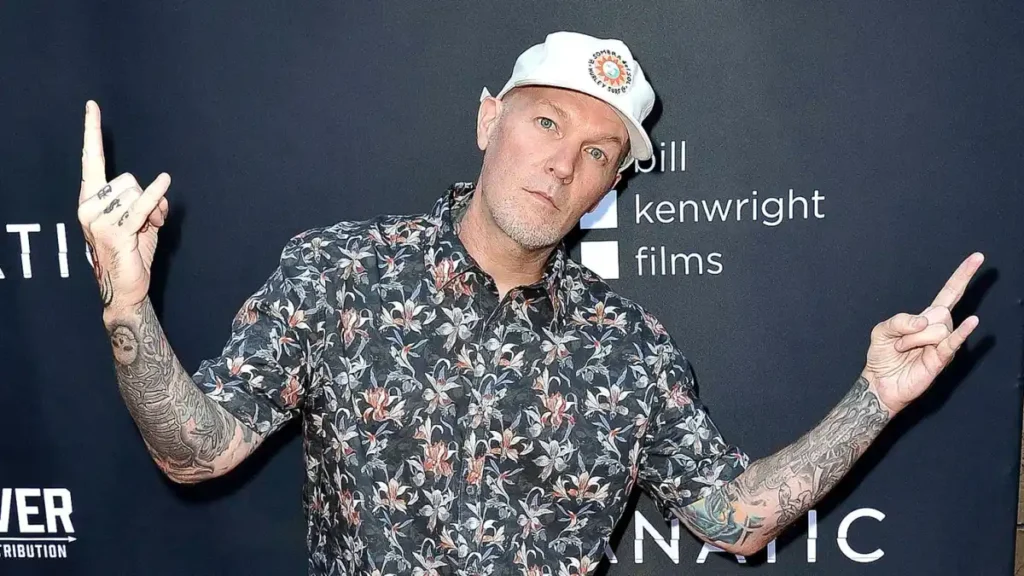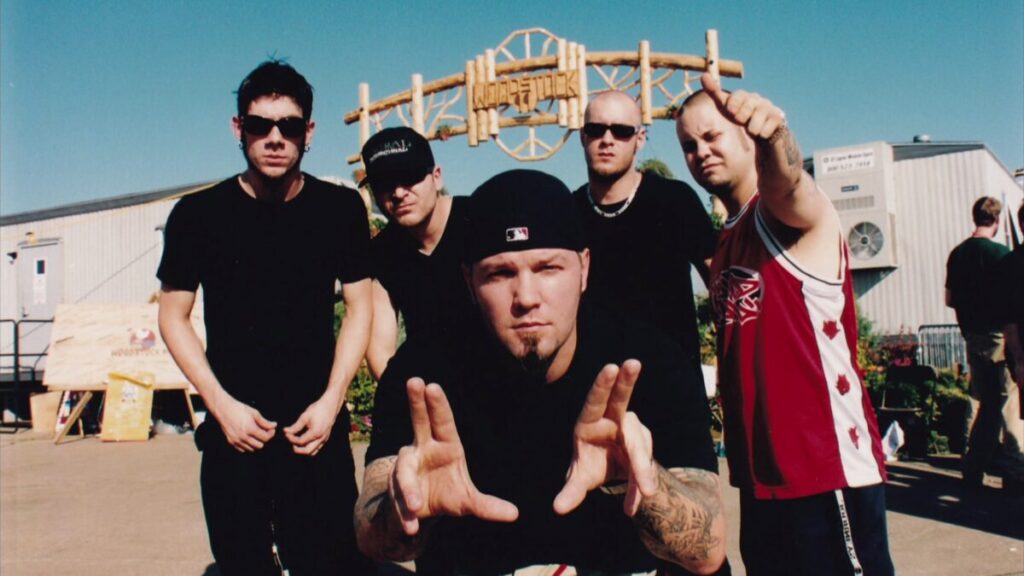YTC Ventures | Technocrat’ Magazine
October 19, 2025
In a shocking loss to the music world, Sam Rivers, the bassist and founding member of the groundbreaking nu-metal band Limp Bizkit, passed away on October 18, 2025, at the age of 48. The news, announced via the band’s Instagram, has sent ripples through fans, fellow musicians, and the industry at large.
Rivers, known for his infectious energy, technical prowess, and unwavering loyalty to his craft, leaves behind a legacy that defined an era of genre-blending rebellion. As Technocrat Magazine, we honor his contributions not just to rock and rap fusion, but to the technological evolution of live performance and digital music distribution that propelled bands like Limp Bizkit into global stardom.

A Legacy of Sound and Fortune: Sam Rivers’ Net Worth
Sam Rivers’ journey from Jacksonville’s underground scene to international fame was marked by financial success that mirrored Limp Bizkit’s explosive rise. At the time of his passing, Rivers’ estimated net worth stood between $5 million and $8 million. This valuation encompassed earnings from album royalties, songwriting credits, live performances, and ancillary ventures like production work for emerging artists and his side project, Sleepkillers.Rivers’ wealth was deeply intertwined with Limp Bizkit’s commercial triumphs.
The band’s catalog, which has sold over 40 million records worldwide, generated substantial passive income through streaming platforms and licensing deals. Hits like “Nookie,” “Break Stuff,” and “Rollin’ (Air Raid Vehicle)”—the latter nearing 1 billion Spotify streams—continued to yield royalties protected under U.S. copyright law for the author’s life plus 70 years, ensuring a lasting financial legacy for his estate.
Beyond music, Rivers benefited from endorsement deals with bass brands like Ibanez and Warwick, reflecting his influence on gear innovation in the rock world. His personal fortune, while modest compared to some solo acts, underscored a career built on collaborative grit rather than solo extravagance.

The Birth of a Brand: Founding Limp Bizkit
Limp Bizkit wasn’t born from polished studios or corporate boardrooms—it emerged from the raw, humid garages of Jacksonville, Florida, in 1994, a product of youthful defiance and serendipitous connections. Sam Rivers, then a versatile musician proficient on guitar and bass, crossed paths with future frontman Fred Durst while both toiled in retail jobs.
Durst, a self-taught rapper and breakdancer with a punk edge, was bouncing between failed bands when he convinced Rivers to join forces. The duo’s early chemistry sparked the short-lived Malachi Sage, but it was Rivers’ suggestion to recruit his cousin, drummer John Otto, that solidified the core trio.The name “Limp Bizkit”—a deliberate misspelling of “limp biscuit” inspired by Durst’s love for repelling casual listeners—was chosen to provoke, embodying the band’s ethos of unapologetic aggression.

By 1996, guitarist Wes Borland’s intricate, visual artistry and DJ Lethal’s turntable wizardry (fresh from House of Pain) completed the lineup. Their debut EP, Pollution, caught the ear of Korn’s Fieldy during a 1997 gig, leading to opening slots on Korn’s tour and a signing with Flip Records for a modest $50,000 advance. What followed was Three Dollar Bill, Y’all$ (1997), a gritty manifesto that blended hip-hop rhythms with metal riffs, setting the stage for nu-metal’s dominance.Limp Bizkit’s “brand” evolved into a cultural force through Durst’s brash persona, Borland’s elaborate stage masks, and Rivers’ pulsating basslines that anchored the chaos. T
hey pioneered fan interaction via early websites, prefiguring today’s social media-driven artist-fan bonds, and their abrasive sound pushed production boundaries, influencing digital audio tools that democratized music creation.
On the Road: Major Tours and the Millions They Reaped
Limp Bizkit’s live prowess turned tours into revenue juggernauts, blending mosh-pit mayhem with technological spectacle—think pyrotechnics synced to Lethal’s scratches and Borland’s LED-lit guitars.
The band’s per-show earnings in their peak years reportedly hit six figures, with collective tour grosses contributing hundreds of millions to their coffers. Rivers, as the rhythmic backbone, was integral to these high-stakes spectacles.Key tours included:
- Korn/Family Values Tour (1998-1999): Opening for Korn exposed Limp Bizkit to massive crowds, building hype for Significant Other. This run, with over 100 dates, helped propel album sales to 16 million copies, generating an estimated $20-30 million in tour revenue through ticket sales and merch.
- Ladies Night in Cambodia Tour (1999): A co-headlining jaunt with Cypress Hill and others, this 43-show outing capitalized on Woodstock ’99 buzz (despite its controversies), pulling in mid-seven-figure grosses amid the nu-metal boom.
- Summer Sanitarium Tour (2003): Supporting Metallica across 19 North American dates, Limp Bizkit’s slot amplified Results May Vary promotion, contributing to a tour-wide gross exceeding $50 million.
- Still Sucks Tour (2022 onward): A resurgence with 59+ shows, featuring openers like Wargasm, this tour grossed tens of millions, blending nostalgia with fresh tracks and proving enduring draw—Rivers rejoined in 2018 post-transplant, infusing renewed vigor.

Later runs like the 2015 “Money Sucks” Russian tour (20 dates) and 2025’s Loserville UK Arena Tour added steady income, with global festivals like Reading and Leeds in August 2025 showcasing their tech-forward staging. Overall, tours accounted for a significant slice of the band’s $200+ million in career earnings, with Rivers’ share fueling his personal portfolio.
| Tour Name | Years | Key Partners | Est. Gross Revenue | Notable Impact |
|---|---|---|---|---|
| Family Values | 1998-1999 | Korn, Ice Cube | $20-30M | Launchpad for mainstream breakthrough |
| Ladies Night in Cambodia | 1999 | Cypress Hill | $10-15M | Post-Woodstock momentum |
| Summer Sanitarium | 2003 | Metallica | Part of $50M+ tour | Promoted Results May Vary |
| Still Sucks | 2022-2025 | $uicideboy$, RiFF RAFF | $30M+ | Nu-metal revival; Rivers’ return |
Sam Rivers’ Love Life: A Private Rhythm Amid the Chaos
Sam Rivers, the late Limp Bizkit bassist whose pulsating grooves defined nu-metal’s golden era, kept his personal life remarkably low-key compared to the band’s high-octane public persona. Born on September 2, 1977, in Jacksonville, Florida, Rivers navigated fame’s spotlight with discretion, rarely sharing details about his relationships in interviews or on social media.

What is known comes from public records, celebrity dating databases, and occasional media reports, painting a picture of two marriages, a child, and a rumored fling—all marked by the turbulence of his rising stardom and later health struggles. Below, we break down the key chapters of his romantic history, focusing on the women involved, timelines, and any known breakups.

First Marriage: Roxie McMahon (1999–2006)
Rivers’ high-profile entry into matrimony came during Limp Bizkit’s explosive breakthrough years, when albums like Significant Other (1999) catapulted the band to global fame. In December 1999, at the age of 22, Rivers married Roxie McMahon, the daughter of WWE chairman Vince McMahon.
The wedding took place in Greenwich, Connecticut, blending the worlds of rock rebellion and wrestling empire. At the time, Roxie was in her early 20s, and the union seemed like a whirlwind romance fueled by the nu-metal scene’s chaotic energy—think sold-out arenas, Woodstock ’99 riots, and endless tour buses.The couple welcomed a daughter, Gaige Rivers, shortly after tying the knot, though exact birth details remain private. Gaige, now in her mid-20s, has largely stayed out of the public eye, with Rivers occasionally alluding to fatherhood as a grounding force amid his band’s excesses. However, the marriage faced strains from Rivers’ grueling tour schedule and the pressures of sudden wealth and scrutiny.

Reports suggest the high-society McMahon family dynamics added friction, with whispers of cultural clashes between the wrestling dynasty’s polish and Limp Bizkit’s raw edge.
The relationship ended in divorce after seven years, finalized around 2006. Sources like Who’s Dated Who list it as a straightforward split, with no public acrimony or messy tabloid battles—unlike some bandmates’ headlines. Post-divorce, Roxie and Sam maintained a cordial co-parenting arrangement for Gaige, and Rivers rarely commented on the fallout, once vaguely noting in a 2010s interview that “life on the road tests everything.” The breakup coincided with Limp Bizkit’s first major hiatus (2006–2009), a period when Rivers stepped back to produce local Jacksonville acts, perhaps seeking stability.
Second Marriage: Kinter Atkins (2001–Present)
Hot on the heels of his split from Roxie—though timelines overlap in some reports, suggesting a brief transitional period—Rivers found enduring partnership with Kinter Atkins.
The couple married in 2001, when Rivers was 24 and riding the wave of Chocolate Starfish and the Hot Dog Flavored Water’s massive success. Kinter, a private figure with no apparent ties to entertainment, reportedly met Sam through mutual Florida music circles. Details on their courtship are scarce, but friends described it as a “steady anchor” for the often-adrift musician.This marriage has lasted over 24 years, making it Rivers’ most stable relationship.
They did not have additional children together, but Kinter embraced stepmotherhood to Gaige, with the family occasionally spotted at low-key events like Jacksonville charity gigs. Rivers’ well-documented battles with alcohol—culminating in a 2017 liver transplant after leaving the band in 2015—tested the bond deeply. In his 2020 book contribution to Raising Hell: Backstage Tales from the Lives of Metal Legends, Rivers credited Kinter’s support as pivotal: “She was there through the darkest tours and the hospital waits—real love doesn’t fade in the noise.”No breakups or separations are reported for this union; it stood as a quiet counterpoint to Rivers’ public life. Kinter remained by his side during his 2018 return to Limp Bizkit and through recent tours like the 2025 Loserville UK Arena run.
Following Sam’s passing on October 18, 2025, tributes from bandmates like Fred Durst emphasized the “beautiful moments” shared, implicitly including family life.
Rumored Girlfriends and Flings
Beyond his marriages, Rivers’ dating history is light on confirmed details, aligning with his private nature. The most notable rumor involves Kayla Paige, an adult film actress. Multiple celebrity insight sites (e.g., CelebsInsights, Famous Birthdays) list them as having dated, though without specific dates or depth—likely a casual fling in the early 2000s amid Limp Bizkit’s party-fueled heyday.
Paige, known for her work in the industry since the late ’90s, and Rivers crossed paths in Hollywood circles, but it never escalated to anything serious or public. No breakup drama surfaced; it appears to have been a brief, low-stakes encounter.
Other whispers from fan forums and old tabloids hint at short-lived romances with unnamed groupies or scene fixtures during peak tours (1999–2003), but nothing substantiated. Rivers himself dodged personal questions, once quipping in a 2001 Kerrang! interview, “My basslines are public; the rest stays backstage.” Post-2010s, with sobriety and family focus, his romantic life seemed firmly off-limits.
Reflections on Rivers’ Romantic Legacy
Sam Rivers’ love life mirrored his career: intense starts, resilient middles, and a preference for harmony over headlines. His marriages bookended eras of triumph and trial, with Roxie representing youthful fame’s glitter (and grit) and Kinter embodying quiet fortitude.
Fatherhood to Gaige was a recurring theme in rare glimpses he shared, often tying it to his perseverance through health scares. In an industry rife with scandals, Rivers’ discretion was a rebellion in itself—proving the “calm in the chaos,” as bandmates eulogized.As Limp Bizkit mourns, so do those who followed Sam’s off-stage story: a man who grooved through heartbreak but always found his beat again. Details may evolve with estate disclosures, but for now, his legacy pulses on—personal and profound.
Condolences from Technocrat Magazine
At Technocrat Magazine, where we celebrate the fusion of art, technology, and human ingenuity, the loss of Sam Rivers feels profoundly personal. He wasn’t just a bassist; he was the steady pulse that powered Limp Bizkit’s sonic revolutions, bridging analog grit with the digital age’s boundless possibilities.
From pioneering online fan engagement in the ’90s to delivering basslines that thrummed through subwoofers worldwide, Sam embodied the technocrat spirit—innovative, resilient, and unyieldingly creative.
Our hearts ache for Fred Durst, John Otto, Wes Borland, DJ Lethal, and the entire Limp Bizkit family, as well as Sam’s loved ones navigating this unimaginable void. His music, a testament to perseverance amid personal battles like his liver transplant, will echo eternally, inspiring future creators to break boundaries and build boldly.
Rest easy, Sam—your rhythm endures in every riff, every crowd’s roar, and every beat that follows.
From all of us at Technocrat, with deepest sympathies and eternal gratitude.

Comments